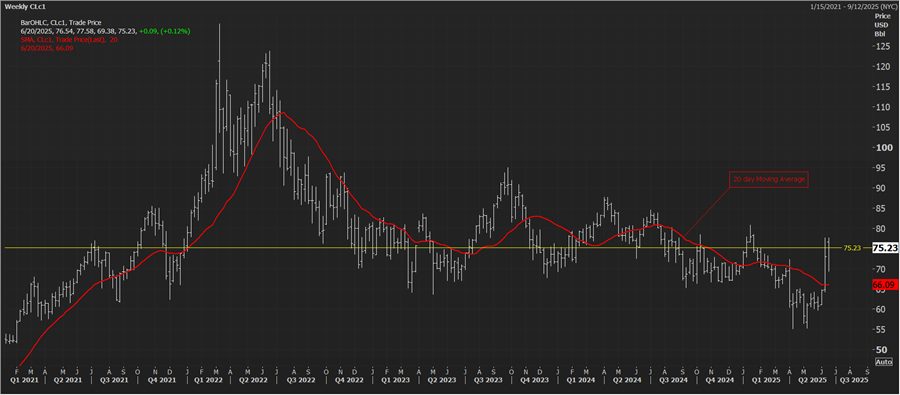IEA Global Oil: The International Energy Agency (IEA) has affirmed that, while global oil markets remain sufficiently supplied, it is prepared to release oil from emergency reserves if warranted by developments stemming from the ongoing conflict between Israel and Iran. The IEA’s oil security system, established in the aftermath of the 1973–74 oil crisis to enhance energy security among member countries, has been instrumental in safeguarding the global economy during periods of supply disruption. This system currently comprises over 1.2 billion barrels of public emergency oil stocks, with an additional 580 million barrels held by industry under government-mandated obligations. The IEA’s emergency response mechanism is specifically designed to mitigate the adverse economic consequences of sudden and severe oil supply shocks by ensuring that supplementary volumes of oil can be swiftly made available to the market. Under the framework, IEA member countries are required to maintain emergency oil reserves equivalent to at least 90 days of net oil imports, enabling a rapid and coordinated response to global supply challenges.
Strait of Hormuz: Maritime advisory agencies are urging commercial crude oil carriers to avoid Iranian territorial waters near the Strait of Hormuz, amid heightened tensions and the risk of further escalation in the conflict between Israel and Iran. To mitigate potential threats, many vessels moving through the region are navigating closer to Oman’s coastline throughout much of their crossings. The Gulf of Oman spans approximately 200 miles, much of which lies in international waters, and is bordered by Iran, the United Arab Emirates, and Pakistan, each with a 12-mile territorial sea. However, vessels must still pass through the Strait of Hormuz, which narrows to just 21 miles at its tightest point. Adding to the growing concerns, reports indicate a significant uptick in electronic interference affecting commercial navigation systems in and around the Strait. These developments have raised alarms in global oil markets over the potential for disruptions in oil supply chains.
China’s Iran Crude Purchases: Crude oil prices have surged approximately 20% so far in June, positioning the commodity for its largest monthly gain since 2020. The sharp rally is being driven, in part, by escalating geopolitical tensions between Israel and Iran, which have raised concerns over potential supply disruptions in the region. In response to the recent price surge, Iranian crude exports to China are being offered at steeper discounts this month. The move appears aimed at accelerating inventory drawdowns, particularly as demand from China’s independent refiners, commonly known as “teapots” has weakened due to the rising cost of crude. Specifically, Iranian light crude for July delivery is being offered at a discount of $3.30 to $3.50 per barrel relative to ICE Brent, widening from the roughly $2.50 per barrel discount seen for earlier June cargoes. The deeper discounts highlight the pressure on Iranian sellers to maintain export volumes amid softening demand and heightened market volatility.
Market Overview: Iran stated on Friday that it would not engage in discussions regarding the future of its nuclear program while under military pressure from Israel. The announcement comes as European nations attempt to bring Tehran back to the negotiating table, and the United States weighs potential involvement in the escalating conflict. Heating oil futures are outperforming the energy complex this morning, climbing another 2% (up $0.0506) while WTI crude and RBOB gasoline remain relatively unchanged. The gains are being driven by intensifying geopolitical tensions in the Middle East, raising concerns overpotential disruptions to regional oil supply. Hostilities between Israel and Iran continue to escalate, with reports indicating that Israel has launched intensified strikes on strategic and governmental targets in Tehran. Attention now turns to Washington, where President Trump is reportedly considering direct military action against Iran. A decision is anticipated within the next two weeks.
WTI Key Price Trends Over 5 Years

Post COVID Recovery, (2021–2022) oil prices surged from the pandemic lows to exceed to over $100 per barrel, thanks to rebounding demand and constrained supply. The recovery from pandemic lows indicates robust market fundamentals, yet prices remained below earlier highs due to global economic uncertainties and periodic supply increases. Volatility and stabilization, (2022–2023) following the spike, prices remained elevated between $90 and $110, then gradually moderated to the high $60s to mid $70s range. This period was marked by market volatility as supply-demand dynamics adjusted amid shifting geopolitical and economic factors. Recent Environment, (2024–2025) prices have hovered in the $65 to $70 range, with geopolitical tensions, supply policy shifts, and demand concerns influencing short-term volatility. The $70 to $80 range represents a resilient market plateau, however, increased geopolitical conflicts, sudden shifts in demand or supply dynamics could all play a role to push prices outside this trading range.

Crude oil and refined product futures ended the session mixed. WTI crude edged lower by$0.21, settling at $74.93 per barrel. In contrast, RBOB gasoline futures led the gains, climbing $0.0209 to $2.3295 per gallon, marking a rare leadership position in recent sessions. Heating oil also posted a modest increase of$0.0084, closing at $2.5418. Geopolitical tensions in the Middle East remained elevated but were somewhat eased by former President Trump’s decision to delay potential U.S. military action against Iran, in an effort to allow space for diplomatic engagement over its nuclear program. Nonetheless, the situation remains unstable. Reports indicate that Israeli Prime Minister Netanyahu has ordered intensified strikes targeting strategic and governmental infrastructure within Iran. Despite the ongoing geopolitical unrest, Iran has maintained robust crude oil exports, reportedly loading 2.2 million barrels per day this week—the highest volume observed in the past five weeks.

